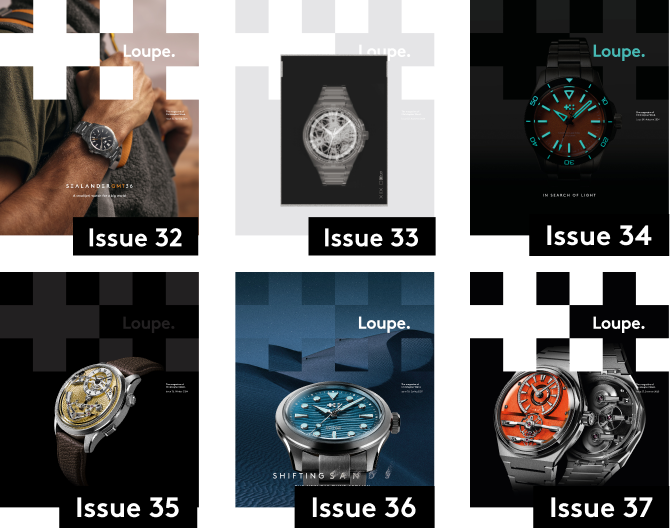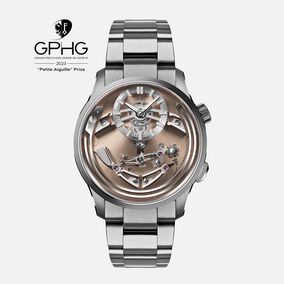With the movement completed, everything comes together in the final stage of the assembly process
So, your movement assembly is complete. What comes next? Well, as that was construction stage T1, it should come as little surprise that next up is T2: the stage at which everything is put together to create the finished watch, save for the addition of a bracelet or strap.

The T2 process usually starts with the setting of the dial and hands within the case; after this, you’d progress to the casing of the movement.
But with Bel Canto, of course, things have to be that little bit different…
Because the dial is already part of a large bridge, it actually has to be set in place during T1; ditto fitting the sound spring, to allow an early check that everything’s working correctly, and letting fine adjustments be made to the striking mechanism. (After all, as vibrations transmitted through the case itself are key to Bel Canto’s distinctive ring, it makes sense that getting this relationship just-so be done early.) Basically, with Bel Canto the T1 and T2 stages blend into each other as with few other watches.
With the entire movement fixed safely in place, it’s now time to check the exact rate at which it vibrates (basically, ensure the timekeeping doesn’t deviate any more than it should over a 24-hour period), making any minor adjustments needed before the case back is closed. Now the sound spring can be mounted, and the recoil of the hammer adjusted by means of the ‘eccentric’ (what looks like a little screw on the module plate, or ‘board’). After each chime, a small spring adjacent to this (and attached to the large lever that actually makes the hammer strike the gong) makes contact with the eccentric, and the lever is pushed a short distance away from the chime. This step is crucial, because after the hammer’s been released, its natural inclination would be to rest against the sound spring, and thus be unable to vibrate as freely as needed. The unhappy result would be a very short tone without reverberation.

Next up, the hands. To ensure that the hour and minute hands at no point touch the dial, and that they sit exactly parallel to each other, they are released exactly on the hour. To avoid the possibility that anything gets scratched while setting the hands, we use special tweezers with plastic tips.
Now it’s safe to remove the adjusting shaft with its plastic crown, a temporary stand-in for the final shaft and crown that’s used up until this point for ease of handling, and to avoid scratching case or crown during assembly. The ‘real’ adjusting shaft is now cut to the correct length and its titanium crown fixed in place. After mounting, more fastidious checks and (if necessary) minor corrections are made: not least, we have to make sure the crown sits at exactly the correct distance from the case.

So far, so finicky – but also relatively straightforward. Next comes the most time-consuming step of all: checking that each and every component is perfectly clean, and even more perfectly functioning. On surfaces with a flawless finish, even the smallest of dust particles become easily visible, and any still present must be ruthlessly removed. Helping immensely with this is a fairly recent addition to the atelier, so-called flow boxes on each watchmaking table. Made largely of glass, they filter the air and radically reduce the number of free-floating dust particles that can get anywhere near the inner workings of your watch.
By now, everything should be cleaner-than-clean and working impeccably. Only now can the bezel be pressed onto the case, at which point the watch head is essentially complete. Time for one more round of tests, this time concentrating on the movement’s behaviour – for instance, is it losing or gaining any time while running, and is the power reserve working correctly? – and the case’s water resistance.

All finished? Not quite! Lastly, with the strap or bracelet now attached and the watch ready to be shipped, we begin our final quality control process, in which each and every aspect of the watch is carefully checked all over again…
For more behind the scenes stories from Christopher Ward, visit christopherward.com/loupe
Related watches

Sign up to Loupe magazine
Loupe is Christopher Ward’s quarterly in-house magazine. If you want to know what’s happening at CW (and you love great journalism), this is where to start. Alternatively, you can read all our back issues on your computer, tablet or phone.
Order your free copyRead Loupe online





